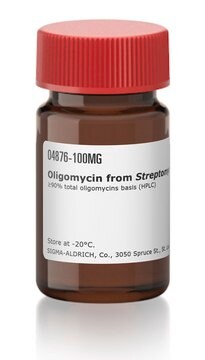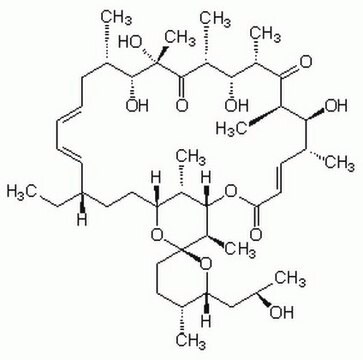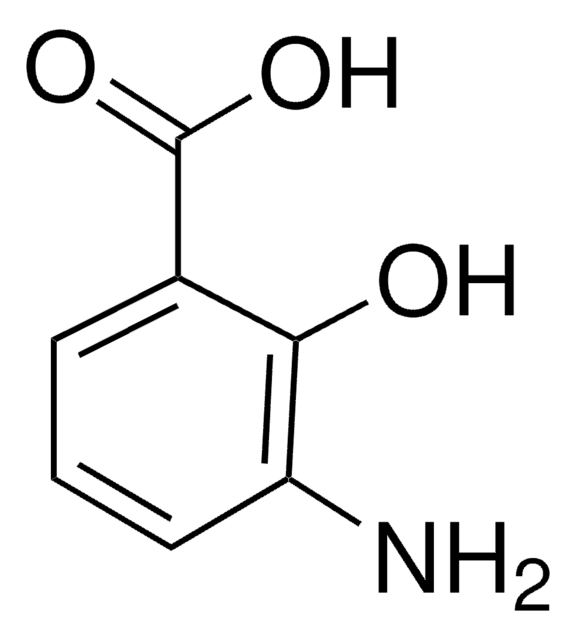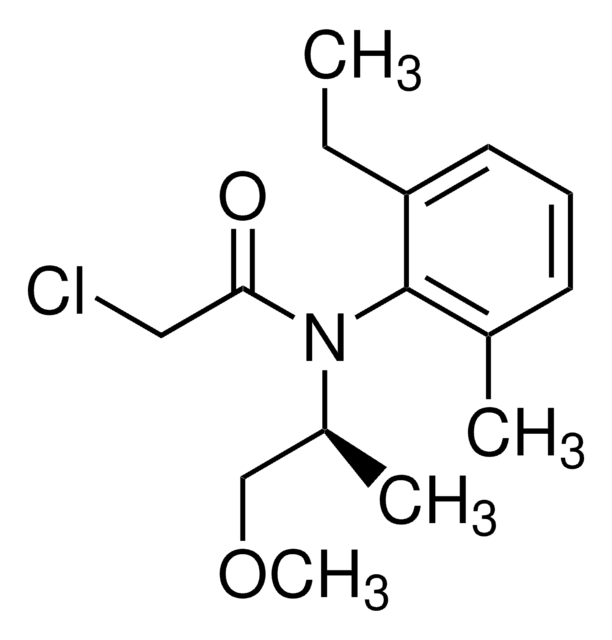557368
Rotenone
≥98% (HPLC), solid, NADH-CoQ reductase inhibitor, Calbiochem
Synonim(y):
Rotenone
About This Item
Polecane produkty
Nazwa produktu
Rotenone, A mitochondrial toxin and a potent, reversible, and competitive inhibitor of complex I (NADH-CoQ reductase) of the respiratory chain.
Poziom jakości
Próba
≥98% (HPLC)
Formularz
solid
producent / nazwa handlowa
Calbiochem®
warunki przechowywania
OK to freeze
protect from light
kolor
white to off-white
rozpuszczalność
ethanol: 5 mg/mL
DMSO: 50 mg/mL
chloroform: 50 mg/mL
Warunki transportu
ambient
temp. przechowywania
10-30°C
ciąg SMILES
O1[C@H]2[C@H](c5c(cc(c(c5)OC)OC)OC2)C(=O)c3c1c4c(cc3)O[C@H](C4)C(=C)C
InChI
1S/C23H22O6/c1-11(2)16-8-14-15(28-16)6-5-12-22(24)21-13-7-18(25-3)19(26-4)9-17(13)27-10-20(21)29-23(12)14/h5-7,9,16,20-21H,1,8,10H2,2-4H3/t16-,20-,21+/m1/s1
Klucz InChI
JUVIOZPCNVVQFO-HBGVWJBISA-N
Opis ogólny
Działania biochem./fizjol.
NADH-CoQ reductase
Opakowanie
Ostrzeżenie
Rekonstytucja
Inne uwagi
Higgins, D.S., Jr. and Greenamyre, J.T. 1996. J. Neurosci. 16, 3807.
Cunningham, M.L., et al. 1995. Cancer Lett. 95, 93.
Informacje prawne
Hasło ostrzegawcze
Danger
Zwroty wskazujące rodzaj zagrożenia
Zwroty wskazujące środki ostrożności
Klasyfikacja zagrożeń
Acute Tox. 1 Inhalation - Acute Tox. 2 Oral - Aquatic Acute 1 - Aquatic Chronic 1 - Eye Irrit. 2 - Skin Irrit. 2 - STOT SE 3
Organy docelowe
Respiratory system
Kod klasy składowania
6.1A - Combustible acute toxic Cat. 1 and 2 / very toxic hazardous materials
Klasa zagrożenia wodnego (WGK)
WGK 3
Certyfikaty analizy (CoA)
Poszukaj Certyfikaty analizy (CoA), wpisując numer partii/serii produktów. Numery serii i partii można znaleźć na etykiecie produktu po słowach „seria” lub „partia”.
Masz już ten produkt?
Dokumenty związane z niedawno zakupionymi produktami zostały zamieszczone w Bibliotece dokumentów.
Klienci oglądali również te produkty
Nasz zespół naukowców ma doświadczenie we wszystkich obszarach badań, w tym w naukach przyrodniczych, materiałoznawstwie, syntezie chemicznej, chromatografii, analityce i wielu innych dziedzinach.
Skontaktuj się z zespołem ds. pomocy technicznej













